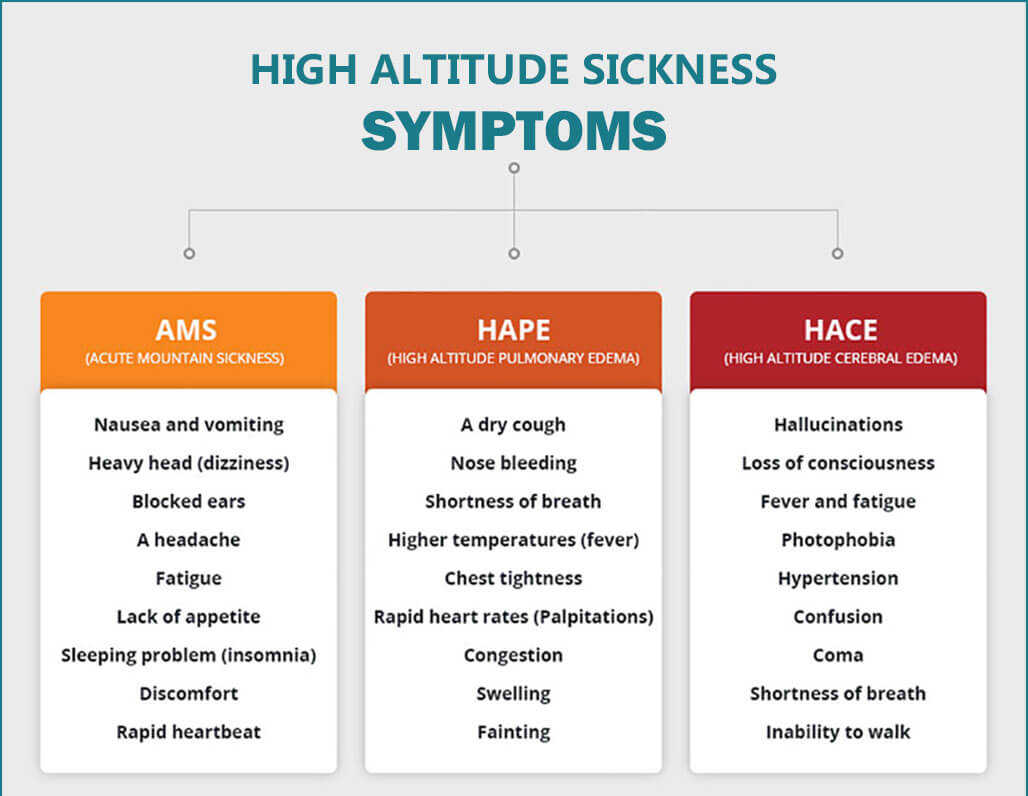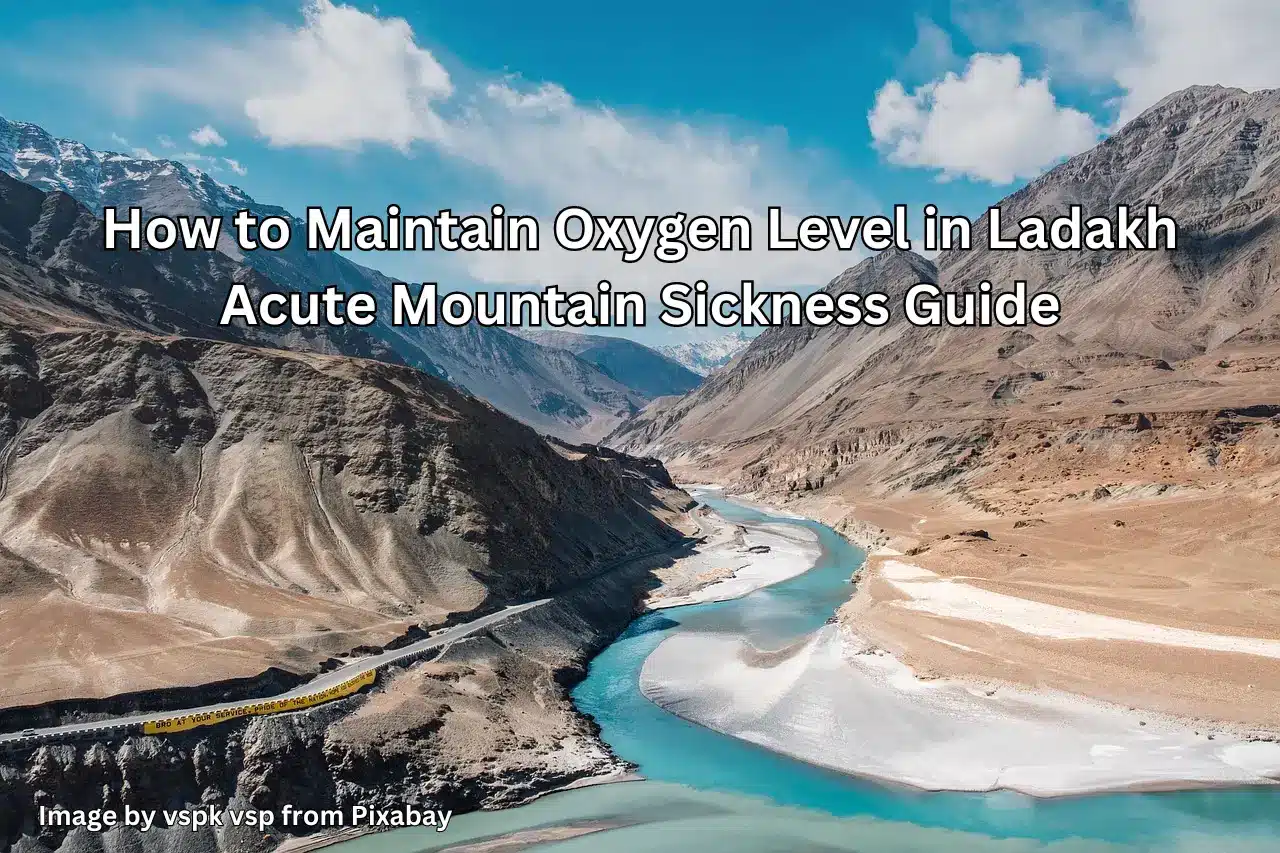You are planning to visit Ladakh and are worried about how to maintain oxygen level in Ladakh? Don’t worry I’m here to guide you about acute mountain sickness/altitude sickness in Ladakh. First of all, you don’t have to worry about mountain sickness when you have the right information about maintaining oxygen level in the Ladakh.
Greetings, I am RøÕsh KB, I live in Ladakh and have visited all the regions of Ladakh. I have good knowledge of Ladakh and its destinations. I can guide you on the challenges that a tourist may face during their first visit to Ladakh.
Ladakh, often referred to as the “Land of High Passes,” is a region in the Indian Union Territory of Ladakh renowned for its stunning landscapes (high mountain passes, beautiful lakes) and rich cultural heritage. Situated at an average altitude of over 3,000 meters (9,800 feet) above sea level, Ladakh’s high altitude presents unique challenges for travelers.
One such challenge is the decreased oxygen levels prevalent at these heights, which can lead to altitude sickness and other health issues. In this blog, we’ll explore various strategies and techniques to help you maintain oxygen level in Ladakh and ensure a safe and enjoyable experience while exploring Ladakh.
Understanding Altitude Sickness in Ladakh
Effects of High Altitude on the Body
At higher altitudes, the air becomes thinner, resulting in lower atmospheric pressure and reduced oxygen levels. As you ascend to higher elevations, your body must work harder to obtain the oxygen it needs to function properly.
This decrease in oxygen saturation can lead to various physiological changes, including increased heart and respiratory rates, as your body attempts to compensate for the lower oxygen levels.
Risks of Low Oxygen Levels In Ladakh
The primary risk associated with low oxygen levels at high altitudes is altitude sickness, also known as acute mountain sickness (AMS). Altitude sickness can range from mild symptoms such as headaches and nausea to more severe conditions like high-altitude cerebral edema (HACE) and high-altitude pulmonary edema (HAPE), which can be life-threatening if not treated promptly. Other risks of low oxygen levels include impaired cognitive function, reduced physical performance, and increased susceptibility to cold-related illnesses.

Symptoms of Altitude Sickness In Ladakh
Headaches
Headaches are one of the most common symptoms of altitude sickness and typically occur within the first 24 hours of ascending to higher altitudes. These headaches are often described as throbbing or pounding and are usually centered on the forehead or temples.
While mild headaches are common and usually resolve on their own as your body acclimatizes to the altitude, severe or persistent headaches can indicate a more serious condition and should be taken seriously.
Nausea and Dizziness
Nausea and dizziness are other common symptoms of altitude sickness and can occur alongside or independently of headaches. These symptoms are thought to result from changes in blood flow and oxygen delivery to the brain and can vary in severity from mild queasiness to severe vomiting and vertigo.
Headaches, mild nausea, and dizziness are common at high altitudes and often improve with rest and hydration. However, persistent or severe symptoms may require medical attention.
Shortness of Breath
Shortness of breath, or dyspnea, is another hallmark symptom of altitude sickness and occurs when your body struggles to get enough oxygen from the thin air at higher altitudes. You may notice that you feel out of breath more easily than usual, especially during physical exertion or exercise.
While mild shortness of breath is normal at high altitudes and usually resolves with rest and acclimatization, severe or persistent shortness of breath can indicate a more serious problem, such as HAPE, and requires immediate medical attention.
How to Maintain Oxygen Level in Ladakh | Preventing altitude sickness in Ladakh
Maintaining oxygen level in Ladakh and preventing altitude sickness is not that hard. You may have heard “you can’t breathe properly in Ladakh” from your friends or YouTube videos. But it is not true at all. If people cannot breathe properly in Ladakh why are people visiting Ladakh from all over the world without much problem and enjoying their trips to the fullest?
You just have to be careful to properly acclimatize when you reach Ladakh by plan. When someone suddenly reaches an elevation of 11,550 feet (3,520 meters) from the plans in just 1-2 hours. The human body doesn’t get much time to adapt to new surroundings like Leh City. This is why someone may feel Headaches, Shortness of Breath, Nausea, and Dizziness. which are common when you suddenly change your elevation.
To Maintain Oxygen Level in Ladakh and Prevent altitude sickness in Ladakh you just have to take proper rest of 1-2 days in your hotel for acclimatization and follow the following tips.
- Hydration
- Breathing Techniques
- Supplemental Oxygen
- Herbal Remedies
- Nutrition and Diet
- Gradual Ascent
Hydration
Staying hydrated is essential for preventing altitude sickness and maintaining optimal oxygen levels at high altitudes. Dehydration can exacerbate the symptoms of altitude sickness and make it harder for your body to acclimatize to the altitude.
To stay hydrated, drink plenty of fluids throughout the day, including water, herbal teas, and electrolyte-replenishing drinks. Avoid alcohol and caffeinated beverages, as these can contribute to dehydration and exacerbate altitude-related symptoms.
Breathing Techniques
Practicing deep breathing exercises can help increase oxygen intake and alleviate symptoms of altitude sickness. Focus on taking slow, deep breaths, inhaling through your nose, and exhaling through your mouth.
You can also try pursed-lip breathing, where you inhale slowly through your nose and exhale through pursed lips as if you were blowing out a candle. These breathing techniques can help improve oxygenation and promote relaxation, making it easier for your body to adjust to the altitude.
Supplemental Oxygen
Oxygen concentrators are another option for supplementing your oxygen intake at high altitudes. Oxygen concentrators are medical devices that extract oxygen from the surrounding air and deliver it to the user through a nasal cannula or mask which can help you to Maintain Oxygen Level in Ladakh.
Unlike portable oxygen cylinders, which contain a finite supply of compressed oxygen, oxygen concentrators use advanced technology to continuously generate oxygen, making them ideal for long-term oxygen therapy at high altitudes.
Many modern oxygen concentrators are lightweight, portable, and battery-powered, allowing you to explore Ladakh’s remote regions without worrying about running out of oxygen.
Herbal Remedies: Ginger and Garlic
Ginger and garlic have long been used in traditional medicine to alleviate symptoms of altitude sickness and improve overall health and well-being. Both ginger and garlic contain natural compounds with anti-inflammatory, antioxidant, and antimicrobial properties, which may help reduce inflammation, boost immunity, and improve circulation—essential factors for acclimatizing to high altitudes.
You can consume ginger and garlic in various forms, such as raw, cooked, or as supplements, to reap their potential benefits. Consider adding fresh ginger and garlic to your meals or brewing ginger tea to soothe nausea and aid digestion during your Ladakh adventure.
Nutrition and Diet to avoid altitude sickness in Ladakh
Maintaining a balanced diet is essential for supporting your body’s nutritional needs and optimizing oxygen utilization at high altitudes. A well-rounded diet provides the vitamins, minerals, and macronutrients necessary for energy production, cellular repair, and immune function, all of which are critical for acclimatizing to the challenges of Ladakh’s high-altitude environment.
Focus on incorporating a variety of nutrient-dense foods into your meals, including fruits, vegetables, whole grains, lean proteins, and healthy fats, to ensure you’re getting the essential nutrients your body needs to thrive at altitude.
Gradual Ascent
One of the most effective ways to prevent altitude sickness is to ascend slowly and allow your body time to acclimatize to the altitude. Ideally, you should avoid ascending more than 300-500 meters (1,000-1,600 feet) per day once you reach an altitude of 2,500 meters (8,200 feet) or higher.
Take frequent breaks during your ascent to rest and hydrate, and listen to your body’s signals. If you start to experience symptoms of altitude sickness, such as headaches, nausea, or shortness of breath, stop ascending and descend to a lower altitude until your symptoms improve.
Foods to Consume at High Altitudes to Maintain Oxygen Level in Ladakh
Certain foods are particularly beneficial for maintaining energy levels and supporting oxygen transport and utilization at high altitudes. Consider including the following foods in your diet during your Ladakh adventure:
- Complex carbohydrates: Foods rich in complex carbohydrates, such as whole grains, legumes, and starchy vegetables, provide a steady source of energy and help stabilize blood sugar levels, preventing fatigue and energy crashes at altitude.
- Lean proteins: Lean proteins, such as poultry, fish, tofu, and legumes, are essential for muscle repair and recovery, especially after strenuous physical activity at high altitudes. Aim to include a source of protein in each meal to support muscle health and recovery.
- Fresh fruits and vegetables: Fresh fruits and vegetables are rich in vitamins, minerals, and antioxidants, which help support immune function, reduce inflammation, and protect against oxidative stress—important considerations for staying healthy and resilient at altitude.
- Healthy fats: Healthy fats, found in foods like avocados, nuts, seeds, and olive oil, provide sustained energy and help regulate hormone production and inflammation, promoting overall well-being and vitality at high altitudes.
- Hydration: Lastly, staying hydrated is critical for maintaining optimal oxygen levels and preventing altitude sickness. In addition to water, consider consuming hydrating foods like watermelon, cucumbers, and oranges, which have high water content and can help replenish electrolytes lost through sweat and respiration.
By prioritizing balanced nutrition and incorporating these nutrient-dense foods into your diet, you can support your body’s physiological needs and optimize your performance and well-being during your Ladakh adventure.
Rest and Acclimatization to Maintain Oxygen Level in Ladakh
Importance of Rest
Rest is essential for allowing your body to acclimatize to the altitude and recover from the physical demands of high-altitude travel. Listen to your body’s signals and prioritize adequate rest and relaxation, especially during the first few days of your Ladakh adventure when acclimatization is crucial.
Avoid overexertion and permit yourself to take breaks as needed to prevent fatigue and reduce the risk of altitude sickness in Ladakh.
Acclimatization Process
Acclimatization is the process by which your body adjusts to the decrease in oxygen levels at higher altitudes, allowing you to adapt to the challenges of Ladakh’s high-altitude environment gradually. The acclimatization process typically takes 1-2 days, during which time your body undergoes various physiological changes to improve oxygen uptake and utilization.
To facilitate acclimatization, plan your itinerary to include gradual ascent and rest days, allowing your body time to adjust to the altitude without undue stress or strain. Pay attention to your body’s signals and adjust your plans as needed to ensure a safe and enjoyable experience in Ladakh.
Safety Tips to Maintain Oxygen Level in Ladakh While Trekking
Trekking Precautions
When trekking in Ladakh, it’s essential to prioritize safety and take precautions to minimize the risk of altitude-related illnesses and accidents. Consider the following safety tips:
Know the signs of altitude sickness in Ladakh: Familiarize yourself with the symptoms of altitude sickness and know when to seek medical attention if you or your travel companions experience severe or persistent symptoms.
- Stay hydrated: Drink plenty of fluids throughout the day to prevent dehydration and maintain optimal oxygen levels. Carry an adequate supply of water and consider using a hydration pack or water purification tablets for extended treks.
- Dress in layers: Dress in layers to stay warm and dry in Ladakh’s variable climate. Wear moisture-wicking base layers, insulating mid-layers, and a waterproof outer shell to protect against cold, wind, and precipitation.
- Protect against sun exposure: Ladakh experiences intense sunlight due to its high altitude and proximity to the equator. Wear sunscreen with a high SPF, sunglasses with UV protection, and a wide-brimmed hat to protect your skin and eyes from sunburn and UV radiation.
- Follow established trails: Stick to established trekking routes and avoid straying off-trail to minimize the risk of getting lost or encountering hazardous terrain. Stay on marked paths, and heed any warning signs or advisories provided by local authorities or park rangers.
- Buddy system: Whenever possible, trek with a companion or group and practice the buddy system to look out for each other and provide assistance in case of emergencies. Share your itinerary and expected return time with someone responsible and check in regularly to ensure your safety.
- Pack essential supplies: Carry a well-equipped backpack with essential supplies, including a first-aid kit, navigation tools, emergency shelter, extra clothing, food, water, and communication devices such as a mobile phone or satellite messenger.
By following these trekking precautions and prioritizing safety, you can minimize the risk of altitude-related illnesses and accidents and enjoy a safe and memorable trekking experience in Ladakh’s stunning landscapes.
FAQ
How can I increase my oxygen level in Ladakh?
It is recommended to stay hydrated and consume lots of water when visiting Ladakh to increase your oxygen levels. Taking paracetamol may also help in symptom relief. It’s important to drop to a lower altitude immediately if you suffer from more severe altitude sickness symptoms.
How can we prevent breathing problem in Ladakh?
It is suggested to acclimate to the high altitude gradually to avoid breathing difficulties when visiting Ladakh. Take a rest day to allow your altitude to acclimate, and increase by no more than 350 meters per day. Keeping enough water and avoiding overexertion is also important.
Is breathing difficult in Ladakh?
No, breathing is not difficult in Ladakh if you are properly acclimatized.
Do we need oxygen cylinder for Ladakh trip?
No, you don’t need an oxygen cylinder for the ladakh trip because there is a sufficient amount of oxygen in the air.
Why oxygen level is low in Ladakh?
Ladakh is also known as “the land of high passes”. It is situated at an average elevation of 3000 meters above the sea level which is why the oxygen level in Ladakh is a little lower as compared to plane areas.
is there oxygen problem in ladakh?
No, there is no oxygen problem in Ladakh if you are properly acclimatized and follow the above guide.
Conclusion
Knowing how to Maintain oxygen level in Ladakh is crucial for a safe and enjoyable experience while exploring the high-altitude terrain of Ladakh. By understanding the effects of altitude on the body and implementing preventive measures such as hydration, gradual ascent, and proper nutrition, you can minimize the risk of altitude sickness and enjoy the trip to Ladakh.
I hope I solved your doubts through this blog, if you still have any questions or want to give us your feedback feel free to send it. Thank you so much for reading this blog have a nice day.
Julley!





